React Native Flatlist Sticky Header
How to Implement a Sticky Header in React Native FlatList
To implement a sticky header in React Native FlatList, we can make use of the `stickyHeaderIndices` prop provided by the FlatList component. The `stickyHeaderIndices` prop takes an array of section indices that should be sticky. Here is an example of how to implement a sticky header in React Native FlatList:
“`
import React from ‘react’;
import { FlatList, View, Text } from ‘react-native’;
const data = [ /* your data goes here */ ];
const renderItem = ({ item }) => {
return (
);
};
const renderSectionHeader = ({ section }) => {
return (
);
};
const App = () => {
return (
stickyHeaderIndices={[0]} // make the first section header sticky
renderSectionHeader={renderSectionHeader}
/>
);
};
export default App;
“`
In the above example, we have a FlatList component rendering a list of data items. The `stickyHeaderIndices` prop is set to `[0]`, which makes the first section header sticky. The `renderSectionHeader` function is responsible for rendering the section headers.
Adding a Section List to the React Native FlatList
If your data is organized into sections, you might want to add a section list to your React Native FlatList. A section list displays section headers above the corresponding items. To achieve this, we can use the `SectionList` component provided by React Native. Here is an example of how to add a section list to the React Native FlatList:
“`
import React from ‘react’;
import { SectionList, View, Text } from ‘react-native’;
const sections = [ /* your sections go here */ ];
const renderItem = ({ item }) => {
return (
);
};
const renderSectionHeader = ({ section }) => {
return (
);
};
const App = () => {
return (
renderSectionHeader={renderSectionHeader}
stickySectionHeadersEnabled={true} // enable sticky section headers
/>
);
};
export default App;
“`
In the above example, we have a SectionList component rendering a list of sections, where each section contains an array of items. The `renderItem` and `renderSectionHeader` functions are responsible for rendering the items and section headers, respectively. The `stickySectionHeadersEnabled` prop is set to `true`, which enables sticky section headers.
Customizing the Sticky Header in React Native FlatList
React Native FlatList provides various ways to customize the sticky header. You can easily style the header by using the `style` prop and apply any desired CSS properties to it. Here is an example of how to customize the sticky header in React Native FlatList:
“`
import React from ‘react’;
import { FlatList, View, Text, StyleSheet } from ‘react-native’;
const styles = StyleSheet.create({
header: {
backgroundColor: ‘blue’,
padding: 10,
},
headerText: {
color: ‘white’,
fontSize: 18,
fontWeight: ‘bold’,
},
});
const data = [ /* your data goes here */ ];
const renderItem = ({ item }) => {
return (
);
};
const renderSectionHeader = ({ section }) => {
return (
);
};
const App = () => {
return (
stickyHeaderIndices={[0]} // make the first section header sticky
renderSectionHeader={renderSectionHeader}
/>
);
};
export default App;
“`
In the above example, we have defined a custom style for the sticky header using the `StyleSheet.create` function. The `header` style defines the background color and padding, while the `headerText` style defines the text color, font size, and font weight. These styles are then applied to the View and Text components that represent the header.
Applying Styling to the Sticky Header in React Native FlatList
If you want to apply different styles to the sticky header based on its position or any other condition, you can do so by using the `onScroll` event provided by React Native FlatList. The `onScroll` event fires whenever the user scrolls the list, providing information about the current scroll position and velocity. You can use this information to calculate the desired styles for the sticky header and update its appearance accordingly. Here is an example of how to apply styling to the sticky header in React Native FlatList based on scroll position:
“`
import React, { useState } from ‘react’;
import { FlatList, View, Text, StyleSheet } from ‘react-native’;
const styles = StyleSheet.create({
header: {
padding: 10,
},
headerText: {
fontSize: 18,
fontWeight: ‘bold’,
},
});
const data = [ /* your data goes here */ ];
const renderItem = ({ item }) => {
return (
);
};
const renderSectionHeader = ({ section }) => {
const [scrollY, setScrollY] = useState(0);
const handleScroll = (event) => {
const { contentOffset } = event.nativeEvent;
setScrollY(contentOffset.y);
};
const headerStyle = {
…styles.header,
backgroundColor: scrollY > 100 ? ‘blue’ : ‘transparent’,
};
const headerTextStyle = {
…styles.headerText,
color: scrollY > 100 ? ‘white’ : ‘black’,
};
return (
);
};
const App = () => {
return (
stickyHeaderIndices={[0]} // make the first section header sticky
renderSectionHeader={renderSectionHeader}
/>
);
};
export default App;
“`
In the above example, we have added a useState hook to track the scroll position in the `renderSectionHeader` function. The `handleScroll` function is responsible for updating the scroll position whenever the user scrolls the list. We then use the scroll position to calculate the desired styles for the header. If the scroll position is greater than 100, we apply a blue background color and white text color to the header, otherwise, we apply a transparent background color and black text color.
Implementing Multiple Sticky Headers in React Native FlatList
If you have multiple sections in your React Native FlatList and want to make multiple headers sticky, you can achieve this by providing an array of section indices to the `stickyHeaderIndices` prop. The headers will then stay at the top of their corresponding sections while scrolling. Here is an example of how to implement multiple sticky headers in React Native FlatList:
“`
import React from ‘react’;
import { FlatList, View, Text } from ‘react-native’;
const data = [ /* your data goes here */ ];
const renderItem = ({ item }) => {
return (
);
};
const renderSectionHeader = ({ section }) => {
return (
);
};
const App = () => {
return (
stickyHeaderIndices={[0, 2]} // make the first and third section headers sticky
renderSectionHeader={renderSectionHeader}
/>
);
};
export default App;
“`
In the above example, we have set the `stickyHeaderIndices` prop to `[0, 2]`, which makes the first and third section headers sticky. You can add as many indices as you like to make multiple headers sticky.
Handling Scroll Events in React Native FlatList with Sticky Headers
React Native FlatList provides the `onScroll` event that fires whenever the user scrolls the list. If you want to perform any actions based on the scroll events, such as updating the sticky headers or applying animations, you can do so by providing a callback function to the `onScroll` prop. Here is an example of how to handle scroll events in React Native FlatList with sticky headers:
“`
import React, { useState } from ‘react’;
import { FlatList, View, Text } from ‘react-native’;
const data = [ /* your data goes here */ ];
const renderItem = ({ item }) => {
return (
);
};
const renderSectionHeader = ({ section }) => {
return (
);
};
const App = () => {
const [scrollY, setScrollY] = useState(0);
const handleScroll = (event) => {
const { contentOffset } = event.nativeEvent;
setScrollY(contentOffset.y);
};
return (
stickyHeaderIndices={[0]} // make the first section header sticky
renderSectionHeader={renderSectionHeader}
onScroll={handleScroll}
/>
);
};
export default App;
“`
In the above example, we have added a useState hook to track the scroll position in the `App` component. The `handleScroll` function is responsible for updating the scroll position whenever the user scrolls the list. You can perform any desired actions based on the scroll position, such as updating the appearance of the sticky header or triggering animations.
Making the Sticky Header Scrollable in React Native FlatList
By default, the sticky header in React Native FlatList stays fixed at the top when the list is scrolled. However, if you want the sticky header to scroll along with the list, you can achieve this by using the `stickyHeaderIndices` prop in combination with the `scrollToIndex` method provided by the FlatList component. Here is an example of how to make the sticky header scrollable in React Native FlatList:
“`
import React, { useRef } from ‘react’;
import { FlatList, View, Text, TouchableOpacity } from ‘react-native’;
const data = [ /* your data goes here */ ];
const renderItem = ({ item }) => {
return (
);
};
const renderSectionHeader = ({ section }) => {
const flatListRef = useRef(null);
const handlePress = () => {
flatListRef.current.scrollToIndex({ index: 0, animated: true });
};
return (
);
};
const App = () => {
return (
stickyHeaderIndices={[0]} // make the first section header sticky
renderSectionHeader={renderSectionHeader}
/>
);
};
export default App;
“`
In the above example, we have added a `TouchableOpacity` component to the `renderSectionHeader` function. When the user presses the section header, we call the `scrollToIndex` method on the FlatList component to scroll to the top of the list. The `scrollToIndex` method takes an object with the `index` of the item to scroll to and the `animated` flag to specify whether the scrolling should be animated.
Adding Animation to the Sticky Header in React Native FlatList
If you want to animate the sticky header in React Native FlatList while scrolling, you can use the `Animated` API provided by React Native. The `Animated` API allows you to create animated values and apply them to any style property or transform of an element. Here is an example of how to add animation to the sticky header in React Native FlatList:
“`
import React, { useRef, useEffect } from ‘react’;
import { FlatList, View, Text, Animated } from ‘react-native’;
const AnimatedView = Animated.createAnimatedComponent(View);
const data = [ /* your data goes here */ ];
const renderItem = ({ item }) => {
return (
);
};
const renderSectionHeader = ({ section }) => {
const scrollY = useRef(new Animated.Value(0)).current;
const translateY = scrollY.interpolate({
inputRange: [0, 100], // adjust these values as needed
outputRange: [0, -100], // adjust these values as needed
extrapolate: ‘clamp’,
});
useEffect(() => {
const listener = scrollY.addListener(() => {});
return () => {
scrollY.removeListener(listener);
scrollY.removeAllListeners();
};
}, []);
const onScroll = Animated.event(
[{ nativeEvent: { contentOffset: { y: scrollY } } }],
{ useNativeDriver: true }
);
return (
);
};
const App = () => {
return (
stickyHeaderIndices={[0]} // make the first section header sticky
renderSectionHeader={renderSectionHeader}
/>
);
};
export default App;
“`
In the above example, we have created an `Animated.Value` instance named `scrollY` to track the scroll position. We use this value to create an interpolation for the transform property of the AnimatedView component. The `inputRange` specifies the range of scroll positions, and the `outputRange` specifies the corresponding values for the transform property. We then use the `translateY` value in the transform property of the AnimatedView component. We also use the `onScroll` event to update the `scrollY` value when the user scrolls the list.
Creating a Dynamic Sticky Header in React Native FlatList
If you want to create a dynamic sticky header in React Native FlatList, meaning that the sticky header changes its content or appearance based on the current item being scrolled, you can achieve this by using the `onViewableItemsChanged` prop provided by the FlatList component. The `onViewableItemsChanged` prop fires whenever the set of items visible in the list changes, providing information about the currently visible items. You can use this information to update the content or appearance of the sticky header. Here is an example of how to create a dynamic sticky header in React Native FlatList:
“`
import React, { useState } from ‘react’;
import { FlatList, View, Text } from ‘react-native’;
const data = [ /* your data goes here */ ];
const renderItem = ({ item }) => {
return (
);
};
const renderSectionHeader = ({ section }) => {
const [currentItem, setCurrentItem] = useState(”);
const onViewableItemsChanged = ({ viewableItems }) => {
if (viewableItems.length) {
setCurrentItem(viewableItems[0].item.title);
}
};
return (
);
};
const App = () => {
return (
stickyHeaderIndices={[0]} // make the first section header sticky
renderSectionHeader={renderSectionHeader}
onViewableItemsChanged={renderSectionHeader} // listen for visible item changes
/>
);
};
export default App;
“`
In the above example, we have added a useState hook to track the current item in the `renderSectionHeader` function. The `onViewableItemsChanged` function is responsible for updating the current item whenever the visible items change. We use the `viewableItems` array to extract the current item. The current item is then displayed in the sticky header.
Troubleshooting Common Issues with Sticky Headers in React Native FlatList
While implementing sticky headers in React Native FlatList, you may encounter some common issues. Here are a few troubleshootings tips to address these issues:
1. Make sure you have set the `stickyHeaderIndices` prop correctly. Check that the section indices provided in the `stickyHeaderIndices` array are valid and correspond to the desired sticky headers.
2. Verify that the `onScroll` event is properly set up. The `onScroll` event handler should
Momo Header Animation – React Native
Keywords searched by users: react native flatlist sticky header stickyHeaderIndices FlatList, Sectionlist sticky header, Sticky header React native, Hide header when scrolling down react native, React native flatlist safeareaview, React Native collapsible header, React native FlatList scrollToIndex, FlatList sticky footer
Categories: Top 31 React Native Flatlist Sticky Header
See more here: dongtienvietnam.com
Stickyheaderindices Flatlist
In today’s digital era, mobile app development has become increasingly popular, leading to the need for efficient solutions to handle large amounts of data. One such solution that has gained significant attention in the React Native community is the StickyHeaderIndices feature in the FlatList component. This powerful feature allows developers to create a user-friendly experience by keeping headers visible while scrolling through extensive lists. In this article, we will cover the basics of StickyHeaderIndices and how to implement it in your React Native applications.
What is StickyHeaderIndices?
StickyHeaderIndices is a prop available in the FlatList component that allows you to specify which items in your list should have sticky headers. When this feature is enabled, the specified headers will stick to the top of the screen as you scroll through the list, ensuring they are always visible to the user. This functionality can greatly enhance the user experience, making it easier to navigate large lists and providing context for the data being displayed.
Implementing StickyHeaderIndices in your React Native application
To implement StickyHeaderIndices in your application, you will need to use the FlatList component from the React Native library. Here’s a step-by-step guide on how to get started:
1. Install React Native and create a new project.
Before you can use StickyHeaderIndices, make sure you have React Native installed on your system. If you haven’t set up a new project yet, use the React Native CLI or create-react-native-app to create a new project.
2. Import the necessary components.
In your project’s code, import the FlatList component from the React Native library. You will also need to import any other components you want to include in your list.
3. Set up your data source.
Create an array or object that contains the data you want to display in your list. This could be anything from a simple array of strings to a complex object with different properties.
4. Render the FlatList component.
Use the FlatList component and pass in the necessary props such as data, renderItem, and keyExtractor. The renderItem prop should be a callback function that renders each individual item in the list.
5. Enable StickyHeaderIndices.
Add the StickyHeaderIndices prop to the FlatList component and specify the indices of the items that should have sticky headers. This prop accepts an array of numbers indicating the indices of the desired items.
6. Customize your headers.
To create visually appealing headers, you can customize the style of the headers using CSS or inline styles. This allows you to control the appearance of the sticky headers to match the design of your application.
7. Test and refine.
Run your application and test the StickyHeaderIndices functionality. Take note of any issues or improvements needed and refine your implementation accordingly.
Frequently Asked Questions (FAQs)
Q: Can I use StickyHeaderIndices with other components?
A: Yes, StickyHeaderIndices can be used with other components in the FlatList. It is common to have sections or headers within the list, and StickyHeaderIndices can be applied to these specific items.
Q: How does StickyHeaderIndices impact the performance of my app?
A: When using StickyHeaderIndices, the FlatList component only renders the visible items on the screen, providing optimal rendering performance even with large data sets.
Q: Can I customize the behavior of sticky headers?
A: Yes, you can customize the behavior of sticky headers to suit your needs. For example, you can change the color, font size, or add animation effects to the headers using various CSS or inline styling techniques.
Q: Are there any limitations or known issues with StickyHeaderIndices?
A: While StickyHeaderIndices is a powerful feature, it does have some limitations. It is mainly designed for simple lists, and using it with complex data structures or deeply nested components may cause unexpected behavior. It is always advisable to thoroughly test the performance and behavior of your implementation to ensure a smooth user experience.
Conclusion
Managing large lists efficiently is a crucial aspect of app development, particularly with the increasing popularity of mobile devices. The StickyHeaderIndices feature in the FlatList component of React Native provides a simple and effective solution for keeping important headers visible while scrolling through extensive lists. By implementing StickyHeaderIndices, you can greatly enhance the user experience, making it easier to navigate and understand the content of your app.
In this article, we covered the basics of StickyHeaderIndices and provided a step-by-step guide on how to implement it in your React Native applications. Additionally, we addressed common FAQs related to using this feature, allowing you to confidently integrate StickyHeaderIndices into your projects. So go ahead, leverage this powerful feature, and create a user-friendly experience with StickyHeaderIndices in your React Native applications.
Sectionlist Sticky Header
In recent years, mobile applications have become increasingly popular, making it crucial for developers to prioritize the design and functionality of their apps. One aspect that contributes to a seamless user experience and ease of navigation is the implementation of sticky headers.
What is a SectionList Sticky Header?
A SectionList sticky header is a scrolling feature commonly used in mobile applications. It allows for the creation of a fixed header that remains visible at the top of the screen while the user scrolls through a list of content. This ensures quick and easy access to important information or navigation tools, regardless of how far down the list the user has scrolled.
How does it work?
When a user scrolls through a SectionList, the sticky header remains fixed at the top of the screen, even if the content of the list continues scrolling. This provides a more intuitive and user-friendly experience by keeping important information constantly visible without obstructing the view of the list items.
Benefits of SectionList Sticky Headers:
1. Enhanced Navigation: Sticky headers enable users to easily refer to and access important sections or functions, such as search bars, filters, or navigation menus, regardless of their position on the page. This allows for a more efficient and enjoyable experience, especially when dealing with lengthy lists or complex interfaces.
2. Seamless User Experience: Users value consistency and familiarity when navigating through apps. By implementing sticky headers, developers can ensure a consistent user experience, as the header remains in a fixed position while the content scrolls underneath. This creates a sense of familiarity and reduces cognitive load, enhancing overall usability.
3. Improved Information Hierarchy: Sticky headers provide the opportunity to prioritize essential information, ensuring it remains in view at all times. For instance, an e-commerce app might use a sticky header to display the user’s shopping cart or promotions, consistently reminding the user of ongoing offers or indicating the status of their selected items. This feature allows for effective information hierarchies that guide users through apps in a more structured manner.
4. Easy Access to Controls: Alongside navigation, SectionList sticky headers can also include essential controls that provide shortcuts to frequently-used features. For example, a messaging app might include a sticky header with buttons for composing a new message or accessing settings. By keeping these controls persistent and easily accessible, users can quickly accomplish tasks without the need for excessive scrolling or searching.
Frequently Asked Questions (FAQs):
Q1: Are sticky headers only applicable to mobile applications?
Sticky headers can be implemented in both mobile and web applications. However, they are particularly useful in mobile apps since users often have limited screen space, making it crucial to ensure important information remains accessible.
Q2: Can sticky headers affect app performance?
When implementing sticky headers, developers must consider performance implications. Rendering a fixed header as the list scrolls requires additional processing power and could potentially impact performance, especially on devices with limited resources. Developers should carefully optimize their code to ensure a smooth user experience.
Q3: How can developers create SectionList sticky headers?
Most popular mobile app development frameworks, such as React Native, Flutter, or Swift, provide built-in functions or libraries that simplify the creation of sticky headers. These frameworks often offer easy-to-use APIs that developers can leverage to implement sticky headers and customize their behavior as per the app’s requirements.
Q4: Can sticky headers be used in all types of lists?
Sticky headers can be implemented in various types of lists, such as simple item lists or more complex hierarchical lists. However, developers should assess the practicality and user experience implications of sticky headers based on the specific context and content of their lists.
Conclusion:
Implementing SectionList sticky headers in mobile applications substantially enhances user experience by improving navigation, ensuring access to essential information, and providing easy control options. Developers must carefully optimize code to balance performance and user interaction. By utilizing sticky headers effectively, developers can create apps that make content more accessible and enjoyable, facilitating a seamless and intuitive user experience.
Sticky Header React Native
React Native is a popular framework that enables the development of cross-platform mobile applications using the JavaScript language. One of the essential features of a mobile application is its user interface, and a sticky header can greatly enhance the overall user experience. In this article, we will explore the concept of a sticky header in React Native and discuss its implementation, benefits, and frequently asked questions.
What is a Sticky Header?
A sticky header, also known as a fixed header, is a UI component that remains fixed at the top of the screen while the user scrolls through the application’s content. It ensures that the header is always visible, allowing users to access navigation menus, search bars, or any other important elements without having to scroll back to the top of the page.
Implementing a Sticky Header in React Native:
To implement a sticky header in React Native, we need to follow these steps:
1. Import the required modules: We need to import the necessary modules from the React Native library, such as ScrollView, View, StyleSheet, and Text.
“`javascript
import React from ‘react’;
import { ScrollView, View, StyleSheet, Text } from ‘react-native’;
“`
2. Define the Sticky Header component: Create a functional component that represents the sticky header. It should contain the desired elements like the app logo, navigation menu, or search bar.
“`javascript
const StickyHeader = () => {
return (
{/* Add the necessary header elements */}
);
};
“`
3. Create the main application component: Build the main application component, which includes the sticky header component and the application content.
“`javascript
const App = () => {
return (
{/* Sticky Header */}
{/* Application Content */}
{/* Add the rest of your application components */}
);
};
“`
4. Style the components: Define the necessary styles for the sticky header and the application container. You can customize the styles based on your design requirements.
“`javascript
const styles = StyleSheet.create({
container: {
flex: 1,
},
header: {
height: 50,
backgroundColor: ‘white’,
borderBottomWidth: 1,
borderBottomColor: ‘lightgray’,
justifyContent: ‘center’,
alignItems: ‘center’,
},
headerText: {
fontSize: 20,
fontWeight: ‘bold’,
},
content: {
paddingHorizontal: 16,
paddingTop: 16,
},
});
“`
5. Render the main application component: Finally, render the App component using the `AppRegistry` module.
“`javascript
import { AppRegistry } from ‘react-native’;
AppRegistry.registerComponent(‘MyApp’, () => App);
“`
Benefits of Using a Sticky Header in React Native:
The implementation of a sticky header in React Native offers several benefits, including:
1. Enhanced User Experience: A sticky header ensures that crucial elements of your application, such as navigation options or primary actions, are always accessible to users, regardless of how far they have scrolled through the content. It improves the overall user experience and makes the application more intuitive to use.
2. Organized Interface: By fixing the header at the top of the screen, a sticky header keeps the interface clean and organized. It prevents the header from obscuring important information or interfering with the user’s view.
3. Easy Navigation: With a sticky header, users can quickly navigate to different sections of the application without the need to scroll back to the top. It saves time and effort, especially in content-heavy applications.
4. Consistency: The presence of a sticky header throughout the application maintains a consistent user interface. It allows users to identify and recognize the header elements easily, creating a sense of familiarity.
FAQs:
Q1. Can I customize the appearance of the sticky header?
Yes, you can customize the appearance of the sticky header according to your design requirements. Using the styling capabilities of React Native, you can modify the header’s background color, font size, text color, and more.
Q2. Can I make the header sticky only in certain sections of the application?
Certainly! You can conditionally render the sticky header component based on the specific sections of the application where you want it to appear. For instance, if you want the header to be sticky only in a particular screen or view, you can conditionally include the sticky header component in that particular component.
Q3. Does a sticky header impact performance?
When implemented correctly, a sticky header in React Native should not significantly impact the application’s performance. However, it is important to make sure that the header component is not overly complex or contains unnecessary elements that could potentially slow down the application.
Q4. Are there any alternative approaches to creating a sticky header in React Native?
Yes, there are alternative approaches to implementing a sticky header in React Native. Some libraries, like `react-navigation` or `react-native-sticky-header`, offer pre-built components that simplify the process of creating sticky headers.
In conclusion, a sticky header is a valuable component in the development of mobile applications using React Native. It enhances the user experience, provides easy navigation, and keeps the interface organized and consistent. By following the steps outlined in this guide, you can easily implement a sticky header in your React Native application and enjoy its benefits.
Images related to the topic react native flatlist sticky header

Found 15 images related to react native flatlist sticky header theme





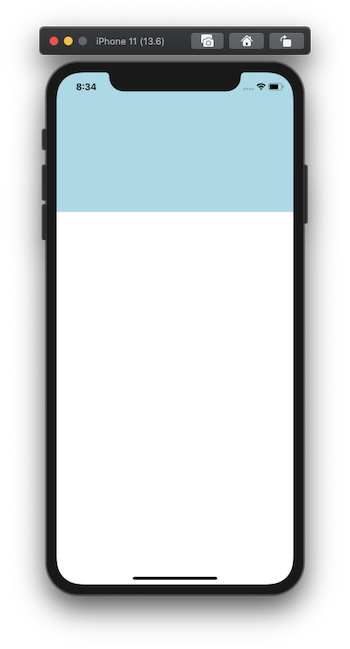


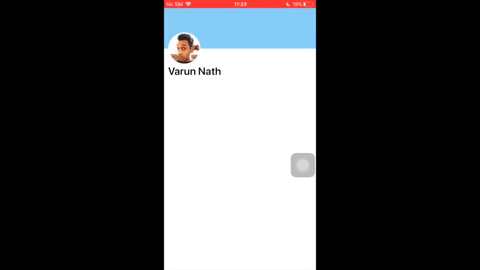









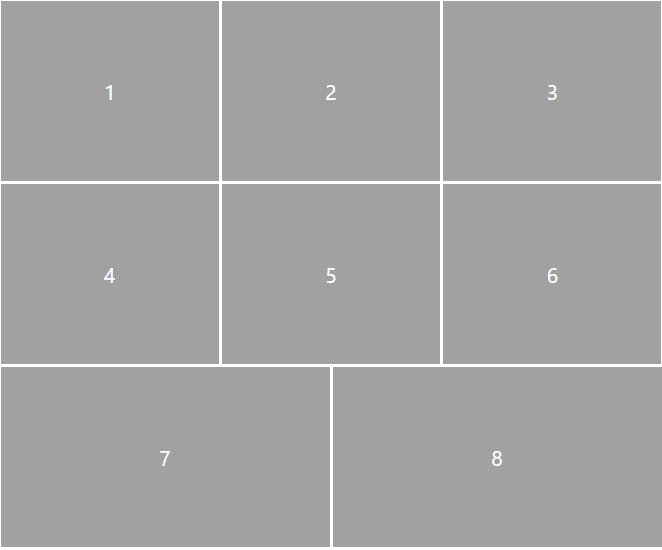
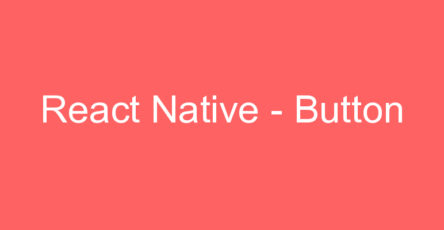

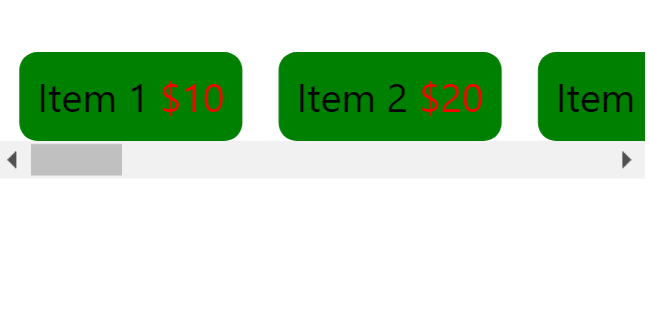
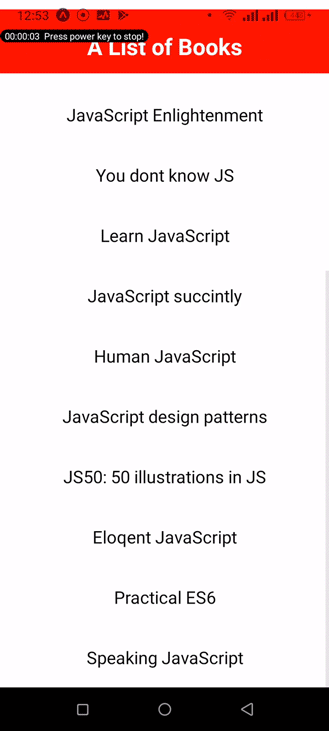




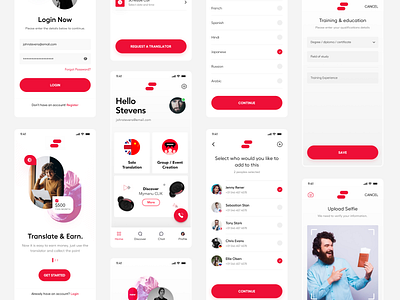


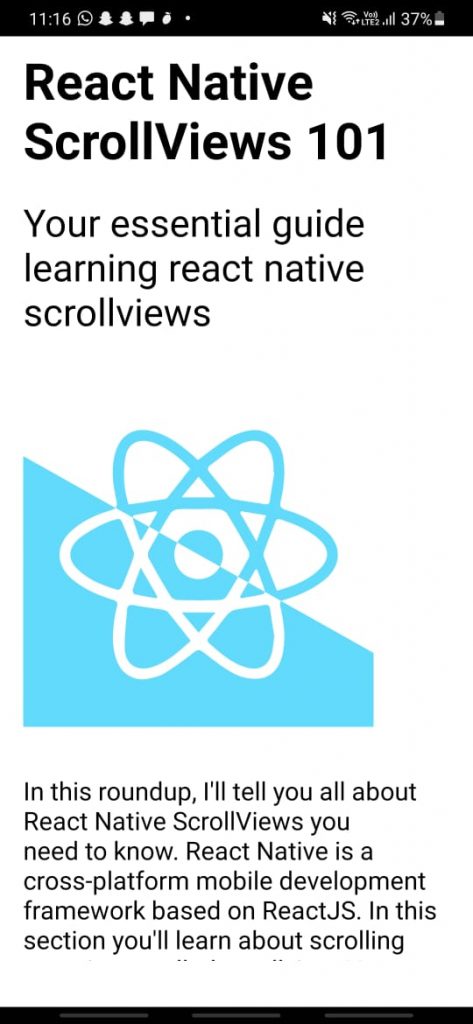
Article link: react native flatlist sticky header.
Learn more about the topic react native flatlist sticky header.
- How do you make the ListHeaderComponent of a React …
- FlatList Sticky Header Example – NativeBase
- How to Make Header of FlatList Sticky in React Native
- FlatList with sticky ListHeaderComponent … – GitHub
- FlatList – React Native
- react-native-sticky-header-flatlist examples – CodeSandbox
- react-native-sticky-header-flatlist – npm package – Snyk
- اضافه کردن Sticky header به Flatlist در react native
- Getting Started | React Native Sticky Parallax Header
- React-native-sticky-header-flatlist – npm.io